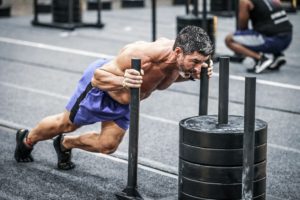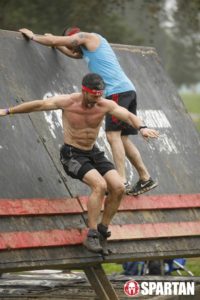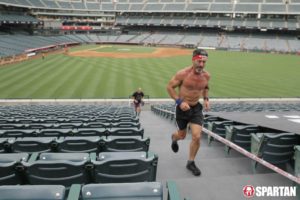Proximal Hamstring Tendinopathy: Joey’s Success Story
Meet Joey: A Different Athletic Background 
Joey hails from San Diego and has been an active individual throughout his life, participating in sports like American football, wrestling, boxing, and surfing. However, his athletic journey took an unexpected turn when, at 41 years old, he decided to take up running after being invited to participate in a challenging event known as the Marine Corps mud run—a 10K obstacle course. This marked the beginning of Joey’s transition into endurance sports, but it also led to a series of injuries and ultimately, proximal hamstring tendinopathy.
Onset of Proximal Hamstring Tendinopathy
After years of intense training and pushing himself to the limits, Joey started experiencing pain in his right hamstring tendon near the buttock area. This pain made it uncomfortable for him to sit for extended periods, making even simple tasks like driving for long distances a challenge. Despite the discomfort, Joey continued to train without taking any breaks. He turned to the internet to find answers and, like many others, became a “Dr. Google” expert.
 Seeking Professional Help
Seeking Professional Help
Joey’s journey took a turning point when he decided to consult a doctor. He underwent an MRI, which revealed proximal hamstring tendinopathy with thickening and scar tissue in his right hamstring, while his left hamstring showed signs of inflammation and tendonitis. The doctor presented Joey with two options: surgery with a year-long recovery or a PRP (Platelet-Rich Plasma) injection treatment, which was less invasive but had no guaranteed results. Joey opted for the PRP treatment, which significantly reduced his pain.
During his recovery, Joey stumbled upon the Overcoming Proximal Hamstring Tendinopathy Podcast and realized that the information I shared resonated with his own experience. He decided to seek my guidance to create a tailored rehabilitation program. This marked the beginning of our collaboration to help him regain his strength and overcome PHT.
Proximal Hamstring Tendinopathy Rehabilitation
Joey’s rehabilitation journey was a process of trial and error. It involved carefully tailored exercises and progressions to rebuild his strength and endurance. I worked closely with him to create a structured plan that addressed his unique athletic background and the demands of his chosen sport, high rocks.
Managing Setbacks
Throughout the rehabilitation process, Joey encountered setbacks, as many individuals with PHT do. One notable setback occurred when he pushed too hard during sprinting exercises, causing a flare-up of his symptoms. However, his ability to recognize what triggered the setback and his commitment to following the rehabilitation plan helped him regain control.
Joey’s experience provides valuable insights for individuals dealing with Proximal Hamstring Tendinopathy. Understanding your body and being willing to adapt your training plan based on your symptoms can be crucial in managing setbacks and achieving long-term success. He now incorporates a balanced approach to his training, combining strength work, slow runs, intervals, and strides to maintain his performance without aggravating his condition.
The Importance of Structured Rehabilitation
Joey’s success story emphasizes the importance of having a structured rehabilitation plan. Unlike his previous attempts to manage PHT with ineffective methods, following a well-designed program made a significant difference. He credits specific loading exercises for playing a crucial role in his recovery. These exercises included hip thrusts, lunges, and two types of deadlifts.
One of the key takeaways from Joey’s journey is the importance of patience and consistency. Even when he started feeling better, he had to resist the temptation to rush back into intense training. He understood that the process of overcoming PHT required a long-term commitment to avoid boom-and-bust cycles.
Joey’s experience reinforces the idea of trusting the rehabilitation process. While it can be frustrating to follow a structured plan, he realized that it was the only way to ensure long-term success and prevent setbacks.

Conclusion
Joey’s journey is a testament to the importance of seeking professional guidance, understanding your body, and adapting your training to manage proximal hamstring tendinopathy. By following a structured rehabilitation plan and being mindful of your symptoms, you can overcome the challenges of PHT and continue pursuing your athletic goals. Joey’s success story serves as an inspiration for all those battling this condition—there is hope, and with the right approach, you can overcome it.


 Seeking Professional Help
Seeking Professional Help